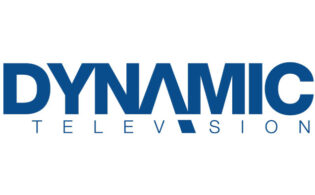Dan March, managing partner of Dynamic Television, highlighted how the role of the independent producer-distributor is evolving in the scripted business as the TV Drama Festival continued.
“We’ve always been very active in developing projects with partners, securing additional financing, investing in shows and ultimately monetizing those through sales,” said March in his conversation with World Screen’s Kristin Brzoznowski, which you can view here.
March noted that the landscape has changed, with producers now somewhat less willing to do a global deal fully funded by a streamer and a “momentum back into traditional distribution, both for having the ability to sell a show and to have upside.”
Like many others, Dynamic is looking to get involved earlier in a project’s life cycle. “There’s so much content supply in the marketplace that buyers can be really choosy, Sitting back as a distributor and just waiting for content to come to you, that’s harder. We need to work with our partners to make sure the shows that we do invest in are successful locally but can be successful globally as well.”
March then talked about financing models, which he believes are still largely the same from an independent distribution perspective. “You get a commission, which is going to cover a certain percentage of the budget. A percentage of that budget will be financed through local incentives, tax credits, soft money. And then you’re looking at a big chunk that you have to cover one way or another. Generally, you get a co-production partner, presales and then you’ll invest the 10 percent to 15 percent to 20 percent remaining against the rest of the world that you feel pretty confident will generate a positive return. That very simple model has not changed. The numbers have changed dramatically, and that’s what makes it harder. That’s part of the reason why you get involved early and you try to develop the right projects at the right price and find the right places to make those shows that ultimately everybody wins. Most shows that we get involved in on the distribution side, we don’t profit unless that show is successful globally. It really needs to be done at the right way and the right price.”
As for where the money actually is, March noted that the European public broadcasting commissioning system, while under pressure, remains a vibrant part of the ecosystem, and the global SVODs are still spending significant sums of money on content. “If you step back and you look at all the challenges streamers are under, their investments are still in the billions of dollars every year in content. That doesn’t have to entirely be global buyouts—it still can be acquisitions. If you buy a show, 99 percent of the time it’s going to be cheaper than making that show in that particular territory. As streamers start looking at optimizing their spend, we anticipate it’ll move a little bit back to an acquired strategy. I don’t think the money is going away. You have distributors like Dynamic that are well capitalized and want to invest in content. There’s been so much negative price pressure, this is as careful as we ever have had to be in evaluating and analyzing the potential of a show.”
March also weighed in on co-productions, noting that it’s become harder “to find that alignment because of the fluctuations in audience, when investment can be allocated and when needs are aligned. As a buyer buys fewer shows, you have fewer opportunities for that alignment. With costs going up, two co-production partners might not be enough.”
U.S. broadcasters and platforms are becoming more open to co-pros, March noted. “I’m more optimistic and positive today than I have been in a while because the economics are demanding that. There’s been such decline in linear viewership that the traditional studio model is hard to sustain. Not enough people are watching. We’re not selling enough ads to warrant that old 60 to 70 percent investment on a $4-million hour. Some broadcasters are willing to look at alternatives. The challenge is that the American audience wants American shows. So, yes, there is a growing and interesting need to look at co-productions. But threading that needle is really challenging because what U.S. buyers are looking for is something that looks, feels and tastes like an American show for an audience that primarily wants American shows. I’m pretty encouraged that there are going to be more opportunities to start exploring some co-productions in the U.S. It’s just going to be tricky to navigate the creative.”
March also discussed the increasing role that distributors are playing in packaging and attracting the right talent, on- and off-screen. “Talent really moves the needle. It’s never been more important to find tools we can bring our partners and say, Hey, this is how you’re going to get an audience. The role of a distributor is to work with the buyer to show them how we’re going to attract an audience to that particular program.”
And providing compelling marketing imagery is crucial, March noted. “Marketing is storytelling in your imagery, in your assets. It’s being able to know what you’re selling to an audience. Sometimes we’re selling a genre, sometimes we’re selling location, sometimes we’re selling the cast, sometimes we’re selling the IP. But you have to understand what your goals are and how you’re going to attract that audience. That should resonate in your imagery, your assets, your entire campaign and your trailer.”
 TVDRAMA
TVDRAMA






